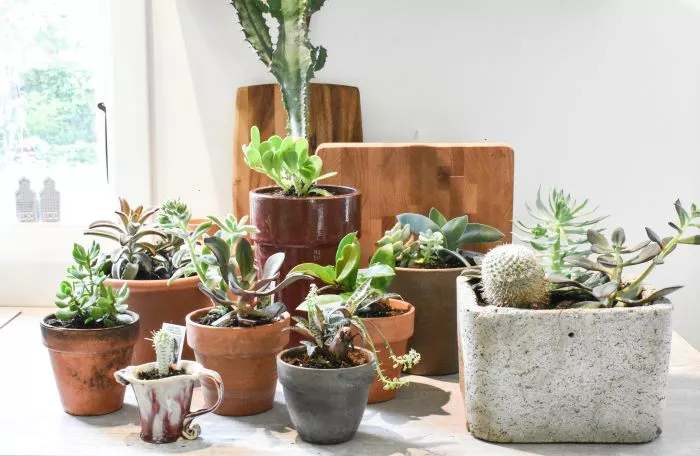Succulent cacti are fascinating plants that belong to the family Cactaceae. Known for their unique shapes and vibrant flowers, they are popular among gardeners and plant enthusiasts. Cacti are well adapted to arid environments, making them relatively low-maintenance and suitable for various growing conditions. This article will guide you through the process of growing succulent cacti, covering essential aspects from selection to care.
Understanding Succulent Cacti
Cacti are a diverse group of plants that store water in their stems, allowing them to thrive in dry conditions. They come in many shapes and sizes, from small, round globes to tall, columnar forms. Succulent cacti can be distinguished by their fleshy tissues, spines, and unique flowers. Understanding the characteristics of cacti will help you provide the best care for your plants.
Choosing the Right Cactus
When starting your cactus collection, it is important to choose the right species. Some popular succulent cacti include:
Echinopsis: Known for their beautiful and large flowers.
Mammillaria: Small and easy to care for, ideal for beginners.
Opuntia: Also known as prickly pear, these cacti have flat pads and produce edible fruits.
Astrophytum: Recognized for their star-shaped bodies and unique patterns.
Consider your growing environment and the amount of sunlight available when selecting a cactus. Research the specific care requirements of each species to ensure a good match for your conditions.
Preparing the Growing Environment
Creating the right environment for your succulent cacti is crucial for their growth and health. Here are some key factors to consider:
Light Requirements: Most cacti thrive in bright, indirect light. A south-facing window is ideal. Some species can tolerate direct sunlight, while others may need protection from harsh rays.
Temperature: Cacti prefer warm temperatures, typically between 70°F and 100°F (21°C to 38°C) during the day. At night, they can tolerate cooler temperatures, but avoid exposing them to frost.
Humidity: Cacti thrive in low humidity environments. Ensure adequate air circulation around your plants to prevent rot and fungal diseases.
Choosing the Right Pot and Soil
Selecting the appropriate pot and soil is essential for successful cactus growth. Follow these guidelines:
Pot Selection: Choose a pot with drainage holes to prevent water accumulation. Terracotta pots are a great option as they allow for airflow and moisture evaporation.
Soil Mix: Use a well-draining soil mix specifically designed for cacti and succulents. You can purchase pre-mixed soil or create your own by combining regular potting soil with perlite, coarse sand, or pumice to improve drainage.
Planting Your Cactus
Once you have prepared the environment and gathered your materials, it is time to plant your cactus. Follow these steps for successful planting:
Fill the Pot: Add the well-draining soil to the pot, filling it to about two-thirds full. Leave enough space for the cactus to be planted without crowding.
Remove the Cactus: Gently remove the cactus from its original container. Use gloves or tongs to avoid being pricked by the spines.
Position the Cactus: Place the cactus in the center of the pot. Ensure that the base of the cactus is level with the soil surface.
Add Soil: Fill in around the cactus with more soil, ensuring that it is securely planted. Avoid burying the cactus too deeply.
Watering: After planting, water the cactus lightly. Ensure that the soil is moist but not soggy. Allow the soil to dry out completely before the next watering.
Caring for Your Cactus
Proper care is essential for the health and growth of your succulent cactus. Here are some important care tips:
Watering Schedule: Cacti require less water than many other plants. Water them thoroughly, allowing excess water to drain out. During the growing season (spring and summer), water every two to three weeks. In the dormant season (fall and winter), reduce watering to once a month or less.
Fertilization: Cacti benefit from occasional fertilization during the growing season. Use a diluted, balanced fertilizer specifically formulated for cacti and succulents. Fertilize every four to six weeks.
Pest Management: Keep an eye out for pests such as mealybugs and spider mites. If you notice any infestations, treat them promptly with insecticidal soap or neem oil.
Repotting: As your cactus grows, it may outgrow its pot. Repotting is necessary when you see roots growing out of the drainage holes or if the plant appears root-bound. Choose a slightly larger pot and fresh, well-draining soil for repotting.
Monitoring for Growth
After planting and caring for your cactus, monitor it for signs of growth and health. Look for the following indicators:
New Growth: New pads, stems, or flowers are signs that your cactus is thriving.
Healthy Appearance: The cactus should maintain its firmness and color. Wrinkled or discolored areas may indicate overwatering or pest issues.
Flowering: Many cacti produce stunning flowers during their growing season. Providing the right conditions can encourage blooming.
Conclusion
Growing succulent cacti can be a rewarding and enjoyable experience. By understanding the unique needs of these plants and providing the right environment, you can cultivate a thriving collection. From selecting the right species to ensuring proper care and maintenance, following these guidelines will help you succeed in growing healthy and beautiful cacti. Embrace the journey of cactus cultivation and enjoy the beauty these remarkable plants bring to your home.


